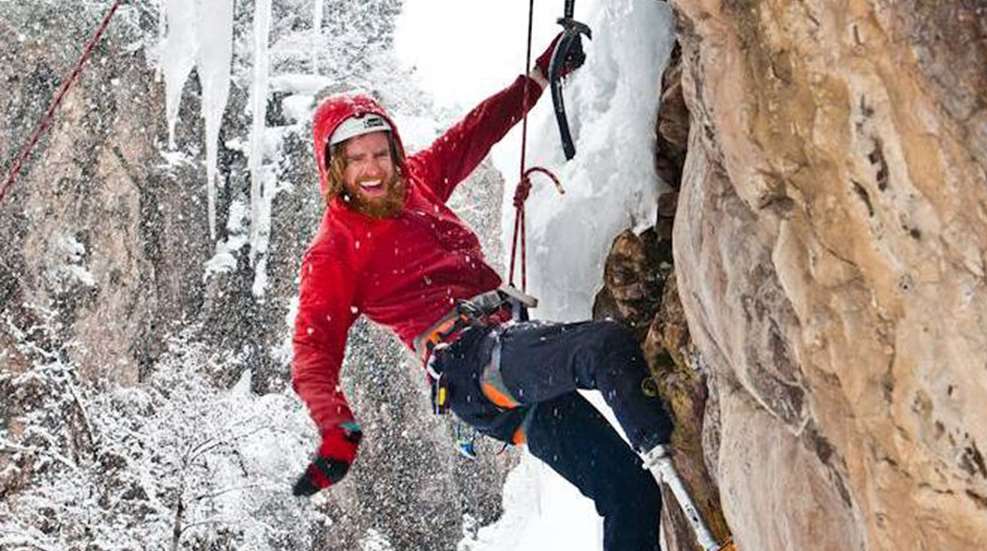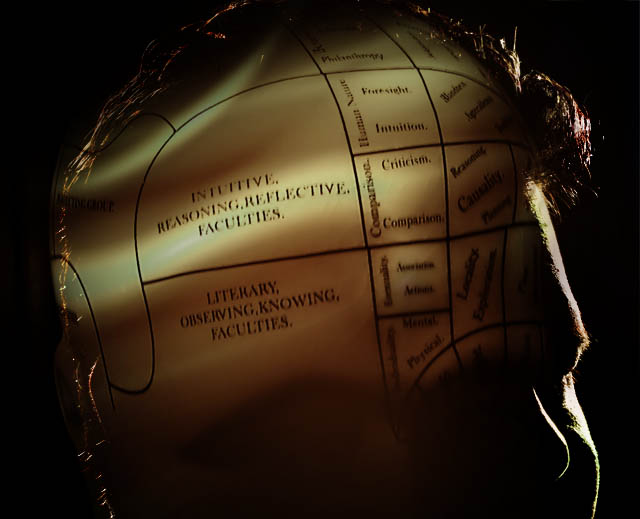
You don't have to be a boxer, a mixed martial artist or soldier to be a warrior. Granted, all three certainly offer advantages when the chips are down, but the fact is we fight primarily with our mind. Our weapons, much like our appendages, are merely extensions of our will. Conversely, you can be a student of numerous defensive skills, but they are worthless unless you possess the will to win. The same holds true with regard to self-defense. While there's been a plethora of periodicals and beaucoup books written about the importance of the defensive mindset. in his book "Real-World Survival! What Has Worked For Me!" author Walt Rauch takes a different approach when discussing the self-defense mindset and how to attain it.
Fearing such things as serious bodily harm and even death is only natural. However, fear is often counterproductive in developing a self-defense mindset. The will to survive and/or win is of key importance. But even more important, surviving and/or winning means more than not giving up—it's mustering the determination to unmistakably overcome. Controlling, or rather negating, your fear is a central facet to developing the defensive state of mind. Why? So it doesn't inhibit or prevent you from neutralizing a threat. Commonly referred to as combat mindset, this state of mind numerous instructors and writers attempt to explain—often through convoluted means—is actually easy to grasp. It pertains to ceasing to fear injury and death. (Cue the sound of gasps and screeching brakes).

Extreme, illogical or pathological you say? Consider this before you banish this tactical tome to the musty confines your local used-book store: Throughout history, countless types of warriors like the Samurai successfully learned to detach themselves from things like the anticipation of victory, the shame of defeat and even the fear of death. Such a state of mind enabled them to engage in battle attentive, prepared and most importantly, indifferent to the rigors of combat. Vikings believed dying valiantly in battle would gain the attention of Odin, who chose half of those slain to travel with valkyries to Asgard and then to the majestic hall of Valhalla. Regardless of nationality or means, the effect was identical—fear was neutralized. Times may have changed, but this fear control is a must when it comes to developing a self-defense-oriented state of mind.
Drawing on the analogy I used from my previous installment, when it comes down to it the wolf's final advantage over sheep is a taste for mutton that puts the fear of death in the entire flock. Were it otherwise, the sheep only have maiming to fear in the form of fleecing. However, consider this: As a human sheep, we have the same ability to hold the same cards. Rauch writes, "After admitting your fears examine them, visualize them, come to know them and come to terms with them. The known fear is the lesser fear and the longer and better you understand your fears the more they diminish, until they are of no real consequence and will have no adverse impact on your actions."
Right about now, you're probably thinking, "But I'm not a soldier. How does this apply to the everday life of a civilian, especially one with a disability?"
There are several possible methods for controlling fear from the extreme to the everyday. One choice is regular exposure to situations perceived as dangerous in order to conquer that paralyzing fear before and during a life-threatening encounter. However, as it pertains to self-defense for the disabled, coordination, range of motion and strength are often limiting factors in this kind of de-sensitation training. Add the fact that loved ones and caregivers recoil at the thought of someone disabled participating in anything perceived as risky. There are opportunities, however.
At the extreme end of the spectrum, a quick Internet search revealed companies that take less-agile people and even those with disabilities bungee jumping, skydiving by way of tandem jumps and even mountain climbing (take a look at some of the awesome work Paradox Sports is doing). Similar courses in adaptive rock climbing and even spelunking are possibilities, too. Naturally, there are risks, but, to borrow a quote from the film "Heat," "…You can get killed walking your doggie."
Rauch continues, "All the top race car drivers have had a few wrecks. None have won without crashing sometime and being able to being able to come back and win again." His statement doesn't just apply to racers, but all drivers. None of us know we will be in a wreck, but we still climb behind the wheel every day—regardless of the weather and without consulting a crystal ball.
When it comes down to it, we all go about our lives from one day to the next not knowing which one will be our last. We've conquered that fear, and through any one of these or similar activities, not only will it help you respond with clarity during a life-threatening event, you might just accrue a new hobby in the process—well, at least between tactical shooting courses.
Don't misunderstand me; developing a self-defense-oriented mindset has nothing to do with donning a daredevil costume, or diving headfirst into extreme sports and throwing caution to the wind. Granted, it does involve taking risks, but doing so by recognizing and staying within your limitations. After all, you don't let the weather dictate your travels, do you? Of course not, you decrease your speed and increase your following distance to match the weather conditions. Nonetheless, should you begin to hydroplane or hit a patch of black ice you know through experience not to panic, to take your foot off the accelerator and turn into the spin. The goal is to understand how to dominate a lethal encounter by working so close to the actual situation that practice is at or near "reality."
To further enhance this notion of detachment from fear, Rauch suggests perceiving the aggressor as, "…a corpse which just happens to still be erect." I consider a zombie more appropriate, because the very nature of its action is subhuman, predatory and monstrous. It's important to remember the creature's actions—not yours—determines its fate. Think of this not as a realization of your actions, but rather a transference of responsibility to the aggressor.
Suppose while on a business trip you're forced to drive through a high-crime urban area. How would you proceed? Is it worth taking the unknown streets at warp speed, intentionally running the stop lights, risking a traffic ticket or worse yet, a serious accident? Your reckless driving would only reveal your fear, should anyone be watching.

However, there's a flip side to this situation. While you're a fearful visitor to this menacing metropolitan environment, many others call it home. How do you think they survive on a daily basis? Certainly they can't tuck their tails and blaze a vapor trail from point A to point B to avoid becoming victims. Naturally, not all the inhabitants are sheep. Some are wolves and they generally don't prey upon each other.
Those who aren't routinely fleeced have adopted a self-defense-oriented mindset. They radiate that resolve (more on this later), and wolves typically avoid someone willing to turn up the heat when easier prey is around.
During a life-threatening encounter, there is no time for thoughts of what the future holds, what is happening or what just happened. You must act in the here and now or there is no future. Everything else is extraneous. To borrow a line from the film "The Whole Nine Yards," "…Why do you wanna go cluttering your mind with the inconsequential?" If someone is threatening you will bodily harm, you have more important things to worry about. Losing the fear enables your mind to focus solely on what's most important—neutralizing the threat.
In regard to autonomic responses to threats, Rauch explains it eloquently in terms of eating. "…You don't consciously think about putting your fork to your mouth or swallowing the food. You let your mind do what you have trained it to do without interference. This is how you fight when `fight' is the only option. This is how your weapons must be used, whatever those weapons may be."
To illustrate the advantages of developing a preprogrammed response, consider the practice of weapon retention. If you were to develop a preprogrammed response, you can effectively counter someone from attempting to grab your gun most of the time. But, if you find yourself in disbelief or wondering how to respond in such an instance, your weapon will be snatched before you can take appropriate measures. A prime example of action being faster than reaction, by responding—without conscious thought—with a preprogrammed action, you enhance your chance of survival.
Nonetheless, as vital as beneficial as a preprogrammed response can be in saving precious time when milliseconds count, the development of it should be pursued judiciously. After all, using the same example, what appears to be a gun grab or some sort of life-threatening act at first, could simply be someone's harmlessly whimsical and abrupt change in direction. So, you'll need to determine just how "tight" to wind your defensive response. But there's another side to this sticky wicket. When you factor in a disability, such as limited movement for example, your preprogrammed response may require more winding than a non-disabled person.
If there's a single emotion to your benefit in a life-threatening situation, it's anger. I'm not talking about the kind you experience when the family pet mistakes your favorite pair of socks as a chew toy, but bitter-strong anger for the zombie-like aggressor. The fact you were selected as a potential victim over the rest of the world and forced into this situation will be sufficient to kick your self-defense instincts into high gear, which will prove beneficial.
What other ways can this defensive mindset be developed? There is no simple or quick answer. Of course, veteran law enforcement officers who've been forced to draw their weapon in the line of duty have developed it, likewise has the soldier who spent time on the battlefield defending our freedoms. However, this mindset isn't limited to just those in high-risk professions. Rauch writes, "…[T]hose who have survived even a single armed encounter may have developed these abilities. The downside to developing this mindset is somewhat like learning to climb a mountain. You might fall off the mountain and you might fail at the encounter. Not all fights are winnable, even though the fight must be joined."
While the defensive mindset can be explained and taught, living through a conflict is still the best form of instruction. Having said that, I strongly suggest seeking out a knowledgeable guide when attempting to quell your fear as you develop your defensive mindset. Whether through an exhilarating form of recreation, like negotiating a rock wall at your local REI, or enrolling in a defensive shooting class, there is no substitute for professional instruction. Not only can they keep your risk manageable, they help you understand the emotions, thoughts and reactions you may experience along the way. Most important of all however, having come face to face with their own zombies and wolves, they can teach you how develop the mind of a warrior and fight to survive.




































